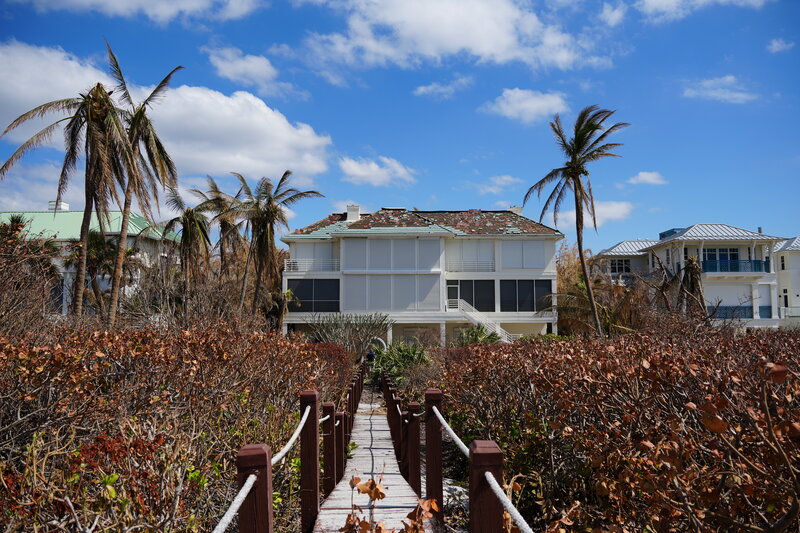The 50 Percent Rule – Substantial Damage after Hurricane Ian
Hurricane Ian was one of the most powerful storms to ever hit the coast of Florida with one minute sustained winds reported at over 150 MPH and the cause of more than 125 deaths. This storm is rated as a Major Hurricane, Category 4, just shy of the 157 MPH sustained necessary to be a Category 5. John Minor is a Floodplain Manager and he measured surge as high as 14 feet above mean sea level in Bonita Springs and am sure it is even higher elsewhere. It came ashore just south of where he was after Hurricane Charlie in Port Charlotte but with a much different size and signature.
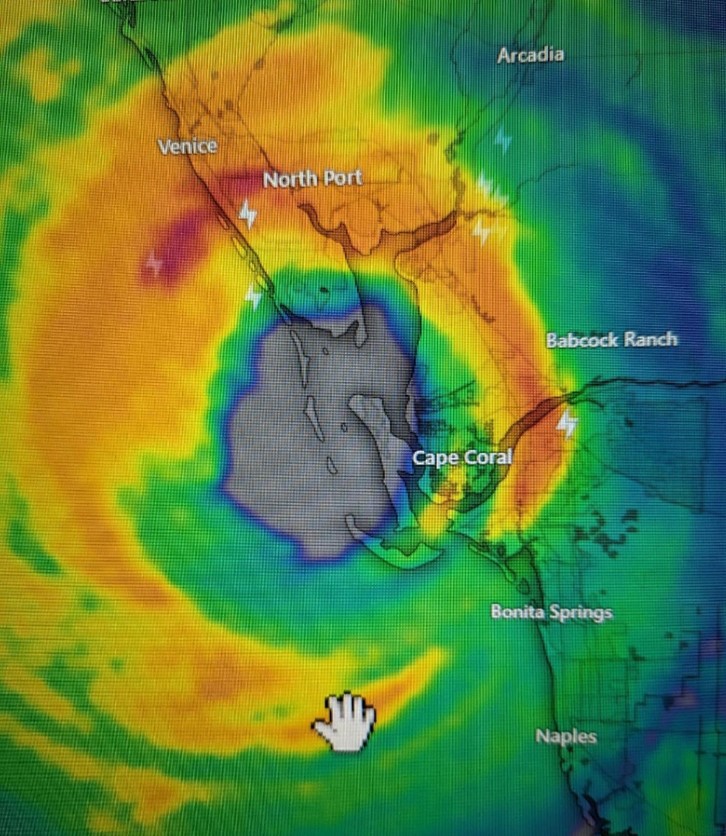
John saw many properties with wind and flood that will become total losses as the result of the application of the 50% rule. The 50% rule is as much an economic damage rule as it is a damage protocol rule, and it does not require structural damages to be present to trigger enforcement.
The rule is critical for persons with damages in the floodplain to understand before they spend money on repairs on a property that may not be a candidate for restoration.
The 50% rule or SD/SI Substantial Damage / Substantial Improvement rule is a stool with three legs each of which are necessary.
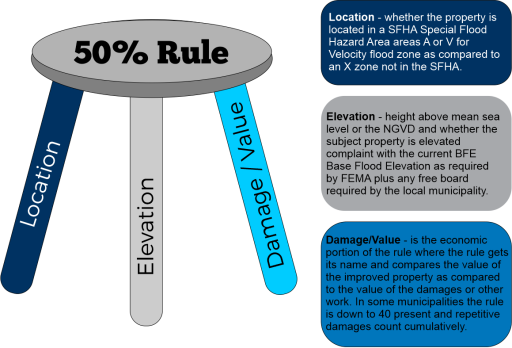
SFHA (Special Floor Hazard Area) – The first of those legs is whether the property is located in an SFHA, which are areas A or V for Velocity flood zone as compared to an X zone which is not in the SFHA. If a property is not in an SFHA then the 50% rule does not apply. The building code has other rules for total loss structural damage, and they rely on loss of horizontal and vertical bearing.
Also, it should be noted just because a property is located in an X zone that does not mean it will not flood, and, in fact, 26% of floods do occur in X zones where flood insurance is very affordable. Here is where you can check your flood zone and local map. https://msc.fema.gov/portal/home
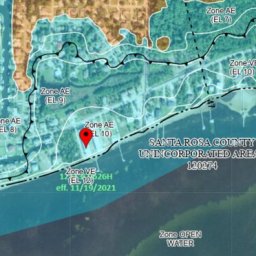
Elevation – The second leg of the stool is Elevation (height above mean sea level) or the NGVD and whether the subject property is elevated complaint with the current BFE (Base Flood Elevation) as required by FEMA plus any freeboard required by the local municipality. The state of Florida has a 1-foot freeboard statewide. The first thing to obtain in a 50% rule issue is an EC or elevation certificate prepared by a surveyor. Older surveys will have the correct elevation but may have not been printed since the last change in the BFE.
Damage/Value – The third leg is the economic portion of the rule where the rule gets its name and compares the value of the improved property as compared to the value of the damages or other work. In some municipalities the rule is down to 40%, and present and repetitive damages count cumulatively.
It also important to note it is not just damages that are counted into the rule it is any improvements. There are also portions of a value that may make it into a claim value that are not a factor in determining the % including mold remediation, drying, or contents manipulation.
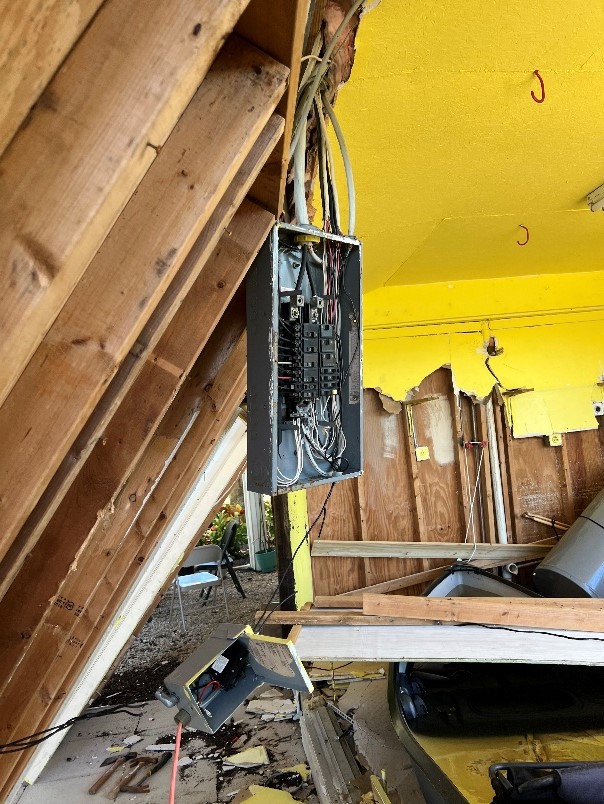
There are many additional details on how the rule gets interpreted and the nuances can have a significant impact on the property and what happens next. Hire an engineer (or a Floodplain Manager if you can find one) to let you know what it takes in your community and how the details can save or sink your project. Complete is a licensed general contracting and engineering firm with almost three decades of service to the southeast with Certified Floodplain Managers and Certified Consulting Meteorologists on staff. We understand the details associated with the 50 percent rule (50% rule) and how it affects your property.
